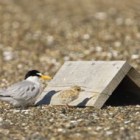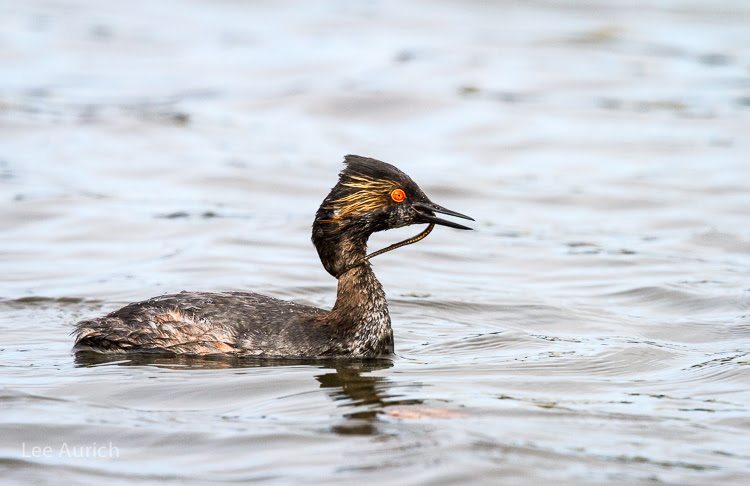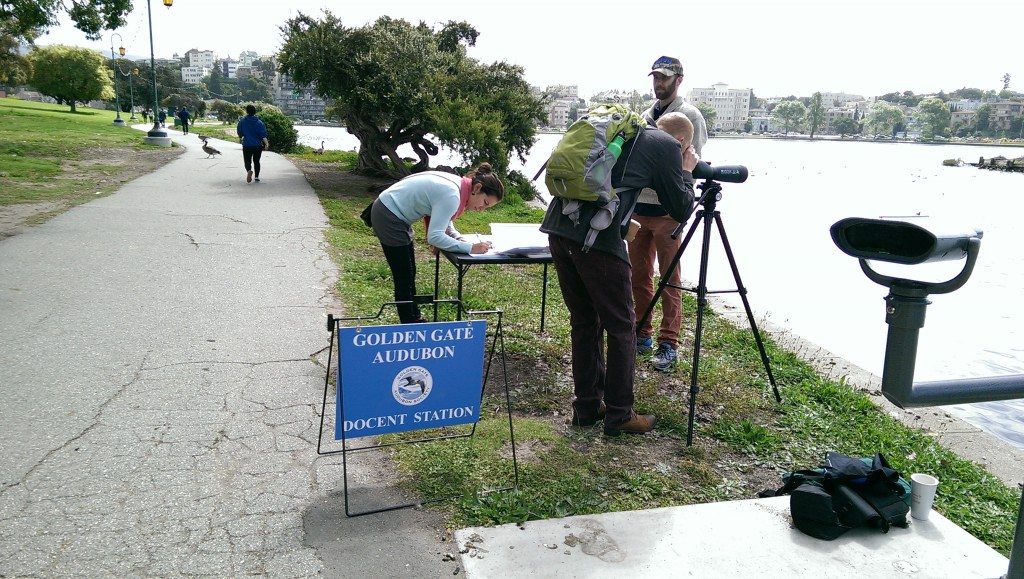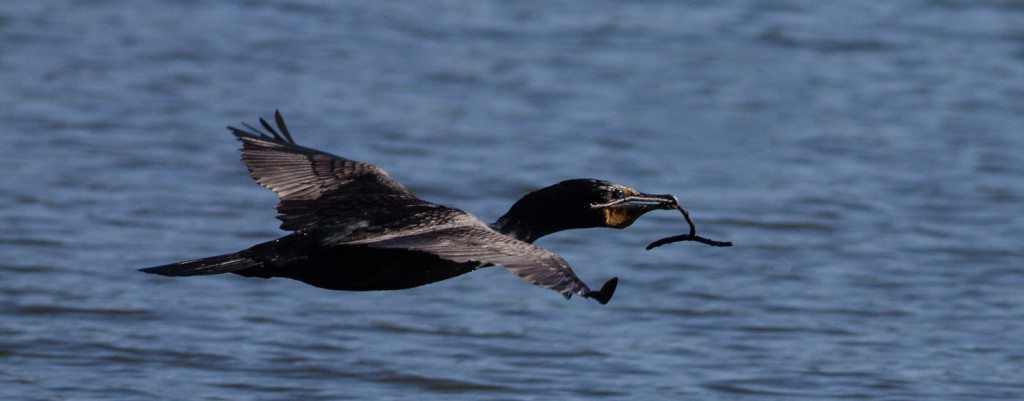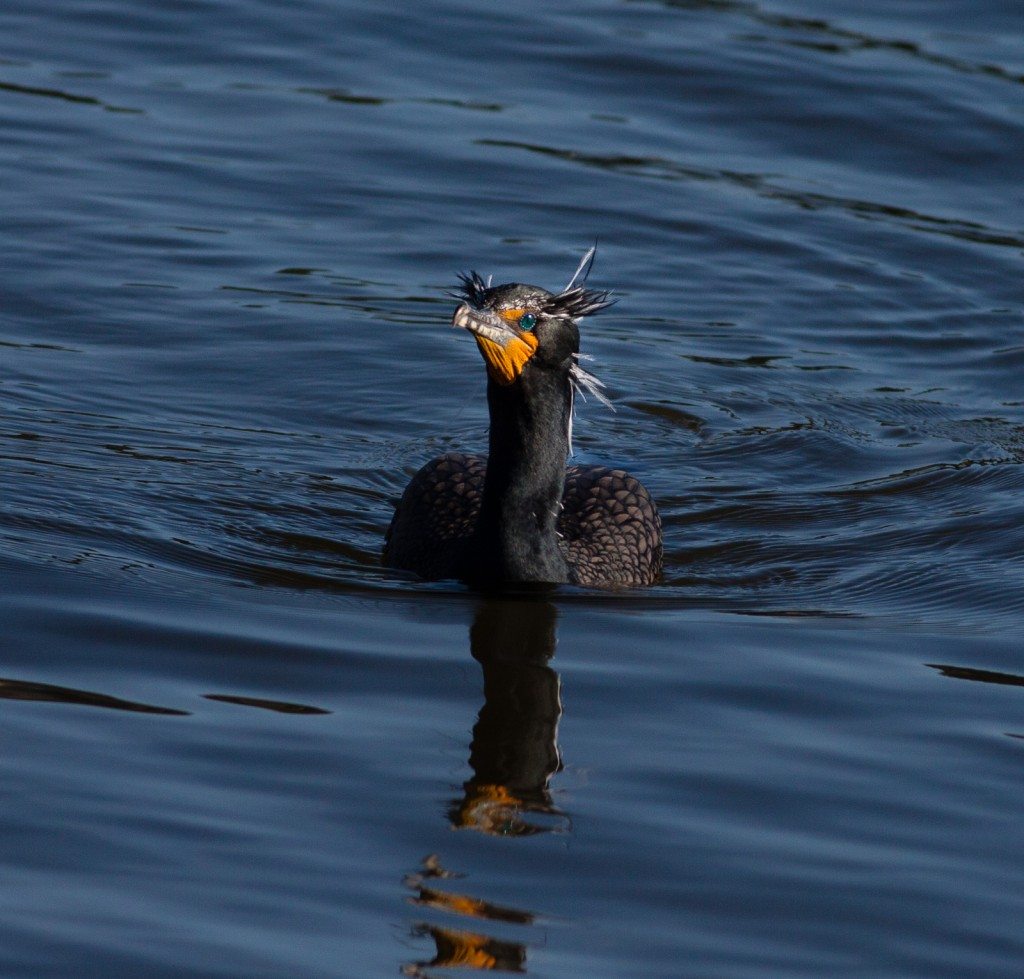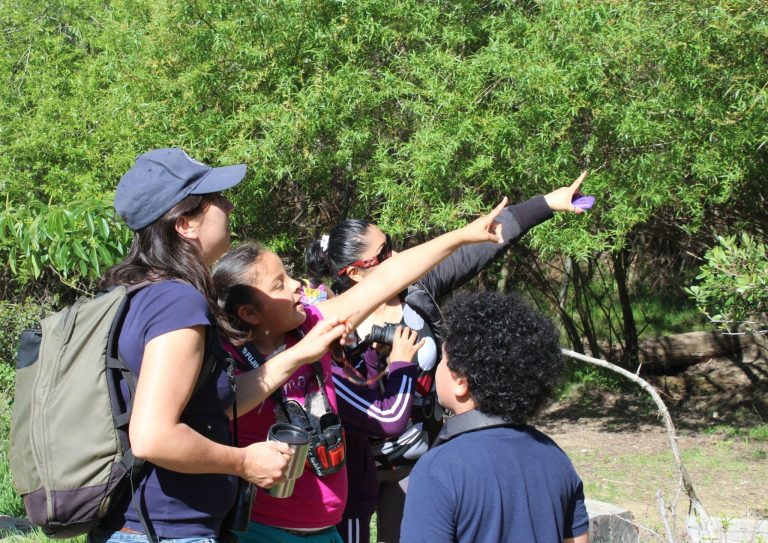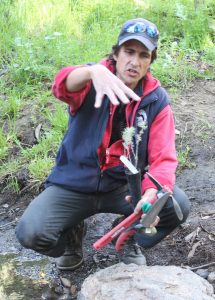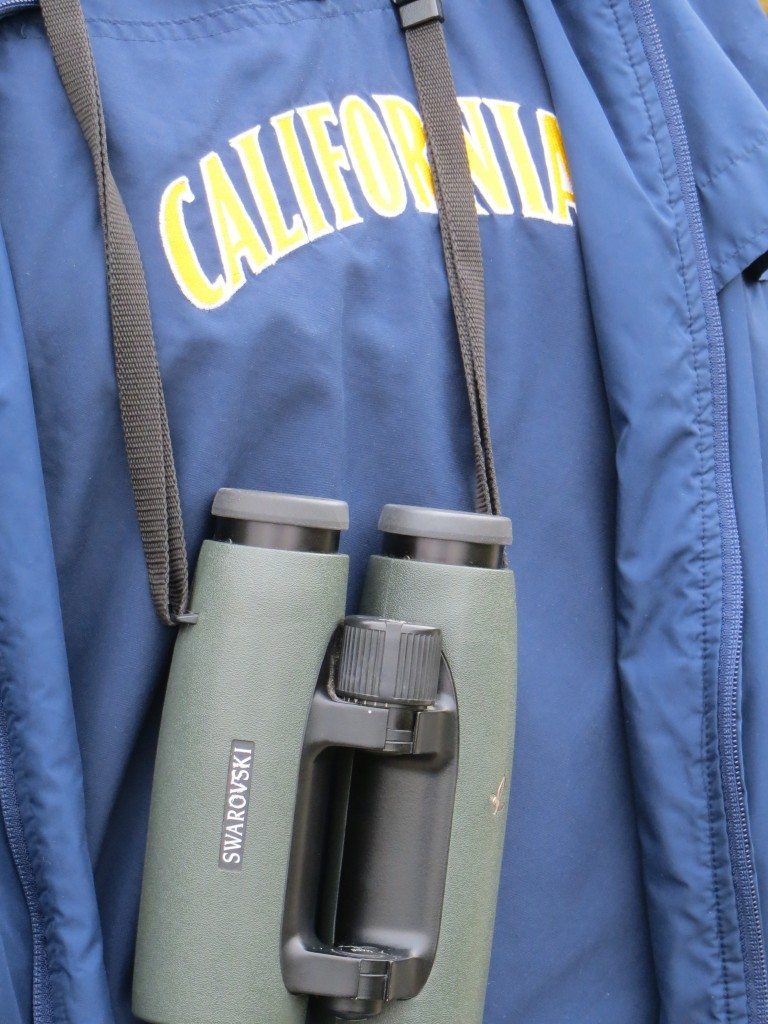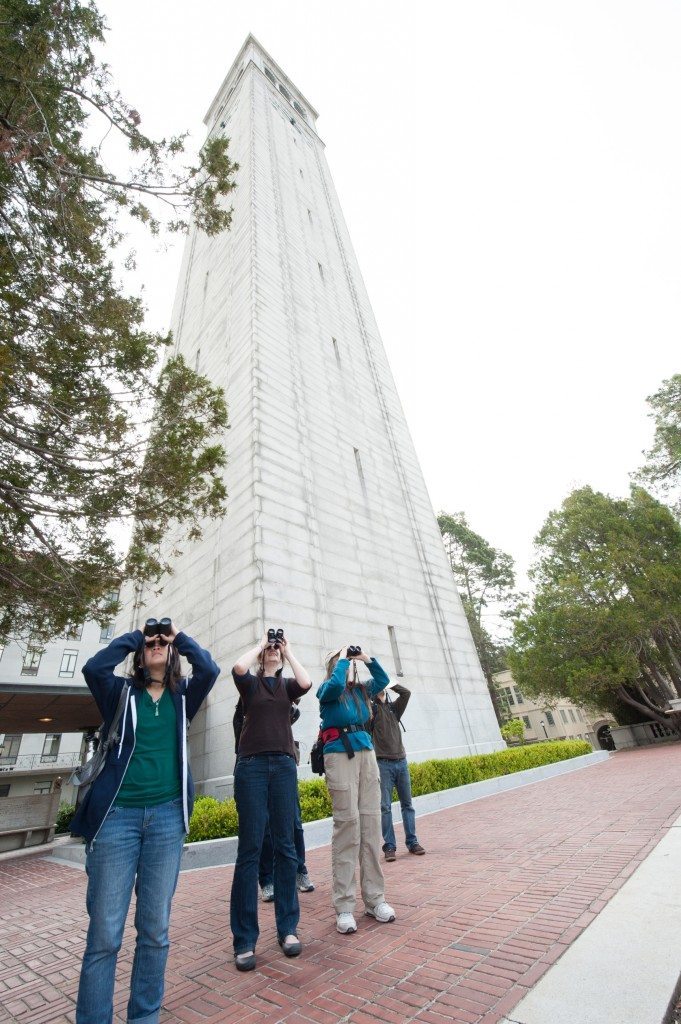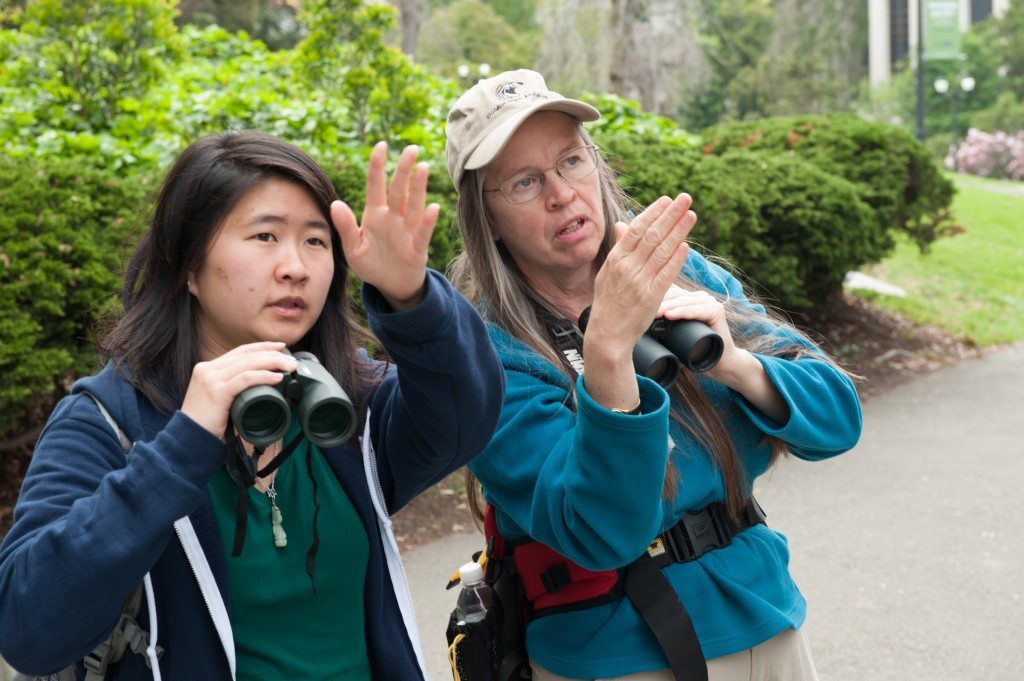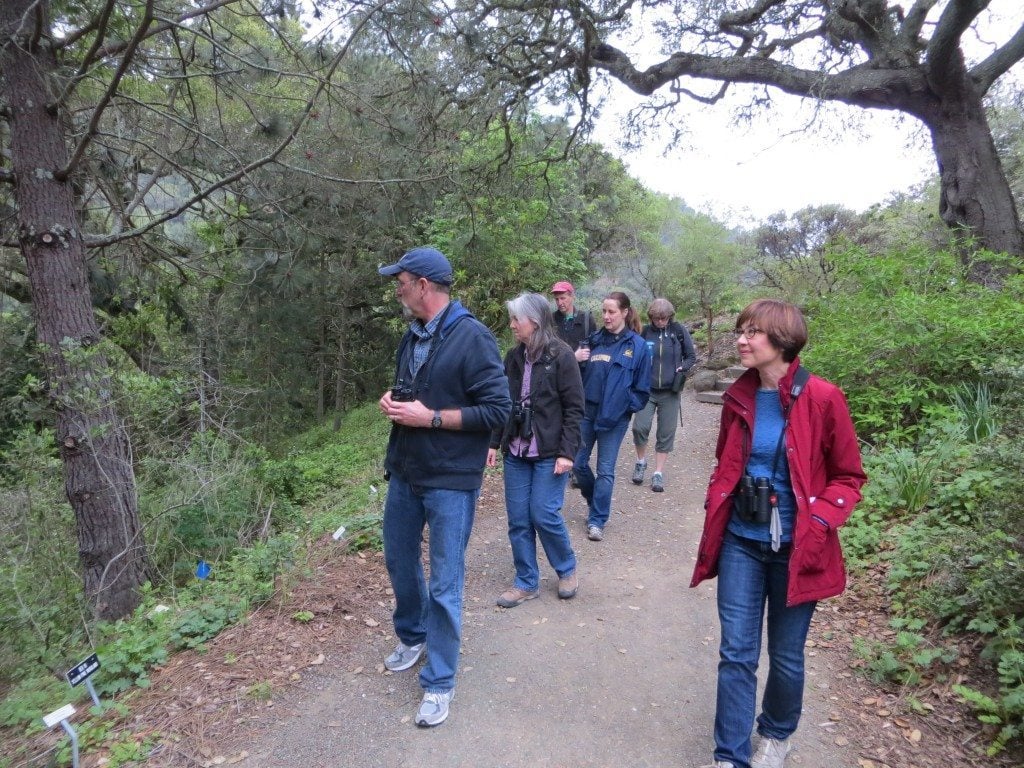Rita Sklar: Sharing the joy of birds in art
By Ilana DeBare
Looking at Rita Sklar’s vivid paintings of birds, you’d think she’d been wielding both binoculars and brushes since she was a child.
But it’s been less than two decades for both.
Sklar – a prize-winning Oakland painter who will be exhibiting her work at our Birdathon Awards Celebration on Sunday May 18 – received her first set of paints as a 10-year-old. She took to them with gusto. But then she abandoned painting in junior high and didn’t pick it up again until around 2000, when she took a watercolor class in Spain.
That was soon after she first started paying attention to the birds all around us.
“I’m embarrassed to say I didn’t even notice birds for most of my life,” Sklar said. “Then I was walking around Lake Merritt for exercise and I noticed some ducks, and saw that some looked different from the other ducks, and that led me to start walking around with a (bird) book. I was getting less exercise, but I was getting more fascinated.”
 Rita Sklar in her studio / Photo by Ilana DeBare
Rita Sklar in her studio / Photo by Ilana DeBare
Sklar joined Golden Gate Bird Alliance and started going on field trips with volunteer leaders like Bob Lewis and Rusty Scalf. She began learning about the environmental threats to bird populations.
That launched her on a series of paintings of birds in decline – at-risk species such as Nuttall’s Woodpecker, California Thrasher, Tri-colored Blackbird, and Surf Scoter.
 Nuttall’s Woodpecker by Rita Sklar
Nuttall’s Woodpecker by Rita Sklar
Some of her works are traditional watercolors. But others are experimental or mixed media. Her Surf Scoter painting (shown next to her, above) is a collage that incorporates fragments of pages from a report about the Cosco Busan oil spill.
“I like trying different things,” Sklar said, taking a break in her cozy Dimond district studio, where the walls are covered with her prints and paintings. “My quail painting is on rice paper, and my Canvasback is on Yupo, which is a kind of plastic that doesn’t absorb the paint.”
 Canvasback and Scaup by Rita Sklar
Canvasback and Scaup by Rita Sklar
 California Thrasher by Rita Sklar
California Thrasher by Rita Sklar
Sklar doesn’t typically paint in the field. She works from photographs – either her own or more detailed close-ups by local bird photographers like Bob Lewis. In recent years, she has moved towards combining realistic bird images with abstract backgrounds as in her painting of Black-necked Stilts in flight.
 Winged Migration in Black and White by Rita Sklar
Winged Migration in Black and White by Rita Sklar
“I did the birds first, then I covered them with a frisket (protective coating) to protect them,” she recounted of the stilt painting.…


